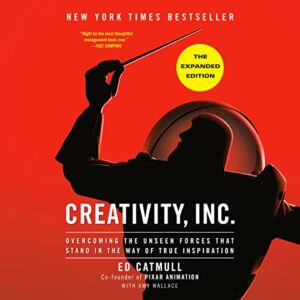Laying the Foundation: Understanding Your Business Inside and Out
Embarking on the journey of starting your own business is nothing short of exhilarating. It’s a canvas where you can paint your dreams, aspirations, and innovative ideas. But before jumping into the specifics of a business plan, it’s essential to solidify the foundation of your business idea. This means truly understanding every facet of your venture, from the niche you want to occupy to the customers you aim to serve. The more intimate your knowledge, the stronger and more resilient your business plan will be.
Ask any seasoned entrepreneur, and they’ll emphasize the importance of groundwork. So, how do you lay a strong foundation for a successful business plan? Here’s where to begin:
1. Passion Meets Purpose
Ensure your business idea stems from a genuine passion. When challenges arise, and they surely will, it’s your passion that will keep you fueled. However, passion alone isn’t enough. Your business should also have a clear purpose. This means identifying a need in the market or solving a particular problem. When passion meets purpose, you’re on a trajectory toward success.
2. Research, Research, Research
Dedicate time to understand the market you’re entering. Who are your competitors? What’s the market size? Are there any emerging trends? This research not only helps in defining your unique selling proposition (USP) but also ensures that you aren’t entering a saturated market without a novel approach. Knowledge is power, and in the business world, it often translates to a competitive advantage.
3. Define Your Target Audience
Every product or service has an ideal customer. Visualize them. Are they young professionals, parents, or perhaps tech enthusiasts? Understanding your target audience will guide many decisions, from product features to marketing strategies. Remember, trying to cater to everyone can often mean reaching no one effectively. Focus is key.
4. Build a Strong Network
Surround yourself with mentors, peers, and professionals who’ve been down this road before. Their insights and experiences can be invaluable, saving you from common pitfalls and guiding you towards better decision-making. While your business idea is unique, the challenges of entrepreneurship are often shared. Learn from those who’ve treaded the path before you.
Starting a business might seem daunting at first, especially with stories of startups failing or facing insurmountable challenges. But remember, every successful business out there started with an idea, nurtured with dedication, hard work, and a sound plan. Your journey is unique, and with the right foundation, you can craft a business plan that doesn’t just look good on paper, but thrives in the real world.
As you delve deeper into the subsequent sections of this guide, always keep your foundational understanding in mind. A business plan is not just a document; it’s a reflection of your dream. By truly understanding your business from its roots, you’re setting yourself up for success. The next steps will build upon this foundation, turning your dream into a tangible roadmap. So, embrace the process, trust in your vision, and remember that every great journey begins with a single, well-thought-out step.
Believe in yourself and your vision. The world awaits the unique mark that your business will leave. Let’s craft a winning business plan together, step by step.
The Core Components: Essential Elements Every Business Plan Must Have
Once you’ve laid the groundwork and have a deep understanding of your business, it’s time to put pen to paper and define the blueprint that will guide your business journey. A business plan is not just a requirement for investors or lenders; it’s your roadmap, a tool that defines your business’s direction, and a reflection of your dedication and vision. Every business plan, no matter the industry or size, shares certain core components that are crucial for its success.
1. Executive Summary
This is often the first section of your business plan but can be written last. It provides an overview of your business, summarizing your mission statement, the product or service you offer, and basic details about the company’s leadership, employees, and location. Think of it as the trailer to the movie that is your business plan: concise, engaging, and enticing enough for the reader to want more.
2. Company Description
Here, you dive deeper into what your company is all about. Outline your business goals, the problems you’re solving for your target audience, and the competitive landscape. Your reader should have a clear picture of what you do and why you do it.
3. Market Analysis
This section is where your research shines. Detail the industry outlook, target market information, market trends, and a thorough competitive analysis. Showcase that you understand the ecosystem you’re stepping into, and highlight where your business fits in.
4. Organization and Management
Investors and stakeholders want to know about the captains of the ship. Describe your company’s organizational structure, detail the backgrounds of your management team, and provide bios of key team members. This will instill confidence in the leadership steering the business towards its vision.
5. Product or Service Line
Dive into what you’re offering. What are your products or services? How do they benefit your customers? If there’s any intellectual property to mention, or research and development activities ongoing or planned, detail those here.
6. Sales and Marketing
How do you plan to attract and retain customers? Discuss your sales strategies, advertising plans, and online marketing tactics. Remember, even the best products need effective promotion to succeed.
7. Financial Projections
With the earlier sections setting the stage, it’s now time to showcase the numbers. Offer a forecast for the next three to five years. Include projected income statements, balance sheets, and cash flow statements. If you’re seeking funding, outline how much you need and how you intend to use it.
Constructing a business plan can initially feel overwhelming, but remember that it’s a living document, evolving as your business grows. Every section is an opportunity to showcase your vision, dedication, and business acumen. While you’re detailing the mechanics, never lose sight of the passion and purpose that propelled you to embark on this journey in the first place.
With a well-structured business plan, you’re not just providing information; you’re telling a story. A story of passion, ambition, foresight, and determination. And, like any great story, it deserves to be shared and celebrated. Let this guide be the platform from which your business dream takes flight. You’ve got the vision; now, you’ve got the plan. All that remains is to bring it to life!
Polishing and Presenting: Tailoring Your Plan for Maximum Impact
Creating a business plan is akin to crafting a masterpiece. Each brushstroke, every detail, contributes to the bigger picture. But like any artwork, it’s not just about the creation but also the presentation. Your business plan might be thorough and well-researched, but how you polish and present it can make all the difference. After all, your plan isn’t just for you—it’s a communication tool, a bridge between your vision and those who can help bring it to life.
1. Fine-Tuning Your Executive Summary
Although the executive summary is often the first thing people read, consider revisiting it after your entire plan is drafted. Ensure it encapsulates the essence of your business and grabs attention right from the start. It’s your elevator pitch in written form; make every word count.
2. Visual Appeal
While content is king, presentation can elevate your plan’s readability and impact. Incorporate graphs, charts, and infographics where appropriate. Break up long sections with subheadings or bullet points. Ensure there’s a consistent font and layout throughout. A visually appealing document is not only easier to digest but also leaves a lasting impression.
3. Tailor for Your Audience
Who will be reading your business plan? If it’s potential investors, emphasize financial projections and return on investment. If it’s for a grant committee, focus on the social or community impact of your business. Understanding your audience and tweaking your presentation to cater to their interests can enhance your plan’s effectiveness.
4. Feedback and Iteration
No masterpiece was crafted in isolation. Seek feedback from mentors, colleagues, or industry professionals. They might offer insights or catch oversights that you missed. Iterative refinement, based on constructive feedback, can transform a good plan into a great one.
5. Practice Your Pitch
If you’ll be presenting your business plan in person, rehearse your pitch. Know the key points you want to emphasize, anticipate questions, and be ready with answers. Your confidence and preparation will shine through, further bolstering the strength of your plan.
The journey from conceptualizing your business to laying it out in a structured plan is a testament to your dedication and entrepreneurial spirit. But the final polish and presentation are what bring it all together, making your business plan not just a document but a powerful statement of intent.
Remember, every entrepreneur, no matter how successful they are now, started with an idea and a plan. Your business plan is the beacon that illuminates your path forward, attracting allies, partners, and supporters to your cause. It’s the embodiment of your dream, presented in its best light, ready to inspire and convince others of its potential.
As you stand at this pivotal juncture, poised to introduce your vision to the world, take pride in how far you’ve come. The dedication, sleepless nights, and tireless efforts have all led to this moment. With your polished and impactful business plan in hand, you’re not just dreaming of success—you’re planning for it.
Embrace the journey ahead, knowing that with every challenge comes growth and with every setback, a lesson. The world of entrepreneurship awaits, and with your stellar business plan, you’re more than ready to make your mark!
Conclusion: Embarking on Your Business Odyssey
Creating a business plan is not just a procedural step—it’s a rite of passage for every aspiring entrepreneur. Through the pages of this guide, we journeyed from the raw, unbridled passion of an idea to the structured finesse of a well-presented plan. Each section of the business plan, from understanding its foundation to its meticulous presentation, serves as a chapter in the greater story of your entrepreneurial dream.
But remember, while this guide provides a blueprint, your business’s true essence lies in its uniqueness—your vision, your commitment, and the problems you aim to solve. Your business plan is a dynamic reflection of that vision, evolving as you grow, learn, and adapt in the unpredictable yet exciting landscape of entrepreneurship.
As you close this guide and take the next steps, embrace the journey with enthusiasm and resilience. Every challenge is an opportunity, every setback a lesson, and every success a testament to your dedication. With your winning business plan as your compass, you are not just charting a path to business success but also crafting a legacy that will inspire many more to follow in your footsteps.
Here’s to your dreams, your ambition, and the incredible journey ahead. Forge forward with confidence, knowing that with a robust business plan in hand, you’re equipped to conquer the world of entrepreneurship. Best of luck!







